
How to Use GSM Shield Sim900: Examples, Pinouts, and Specs
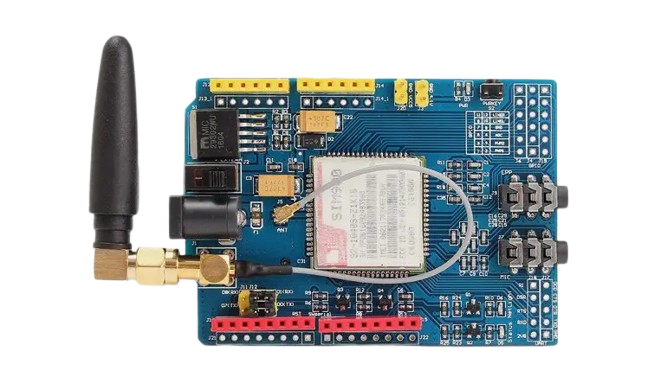
 Design with GSM Shield Sim900 in Cirkit Designer
Design with GSM Shield Sim900 in Cirkit DesignerIntroduction
The GSM Shield Sim900 is a versatile module designed to enable microcontrollers to connect to mobile networks. It supports functionalities such as sending and receiving SMS, making voice calls, and accessing the internet via GPRS. This shield is based on the Sim900 GSM module and is compatible with a wide range of microcontrollers, including Arduino boards. Its compact design and robust features make it ideal for IoT applications, remote monitoring, and mobile communication projects.
Explore Projects Built with GSM Shield Sim900
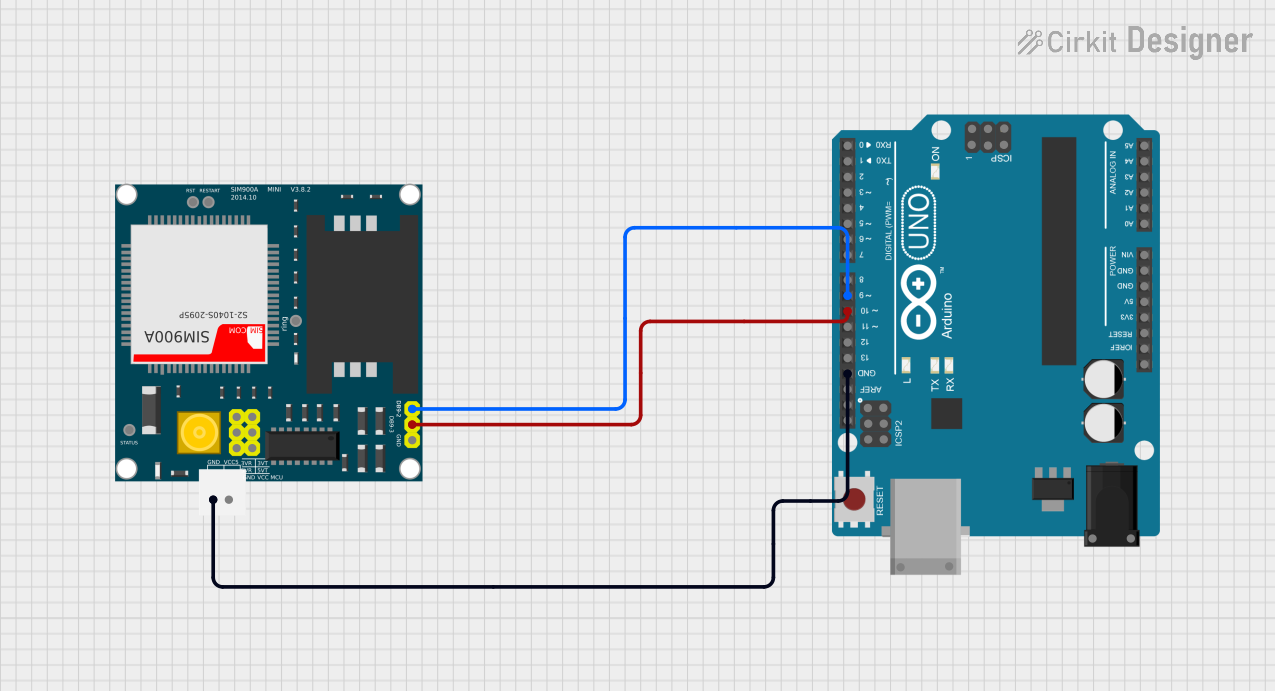
 Open Project in Cirkit Designer
Open Project in Cirkit Designer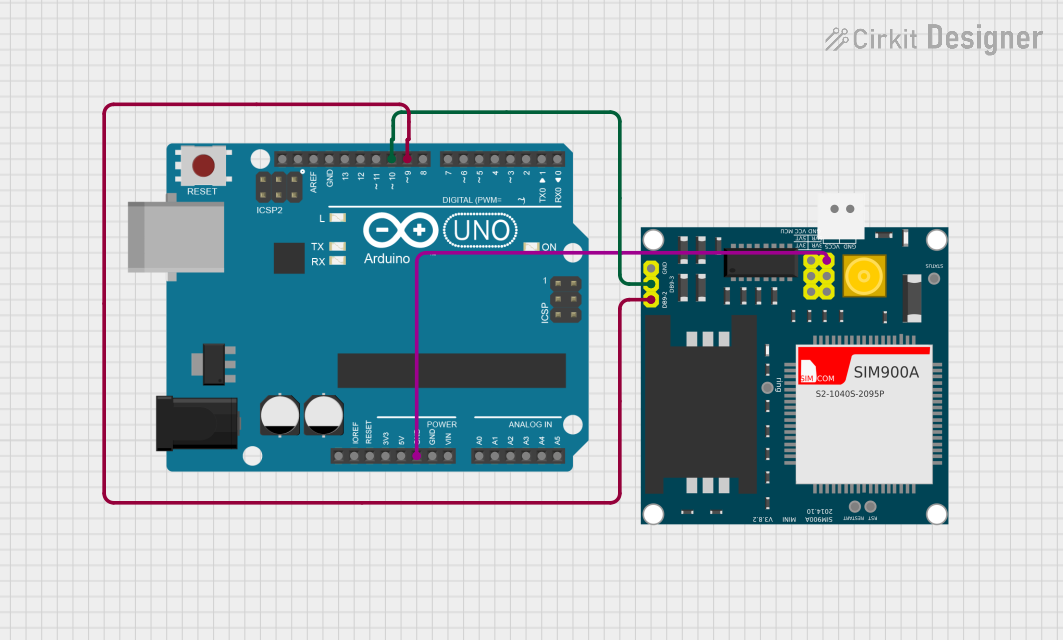
 Open Project in Cirkit Designer
Open Project in Cirkit Designer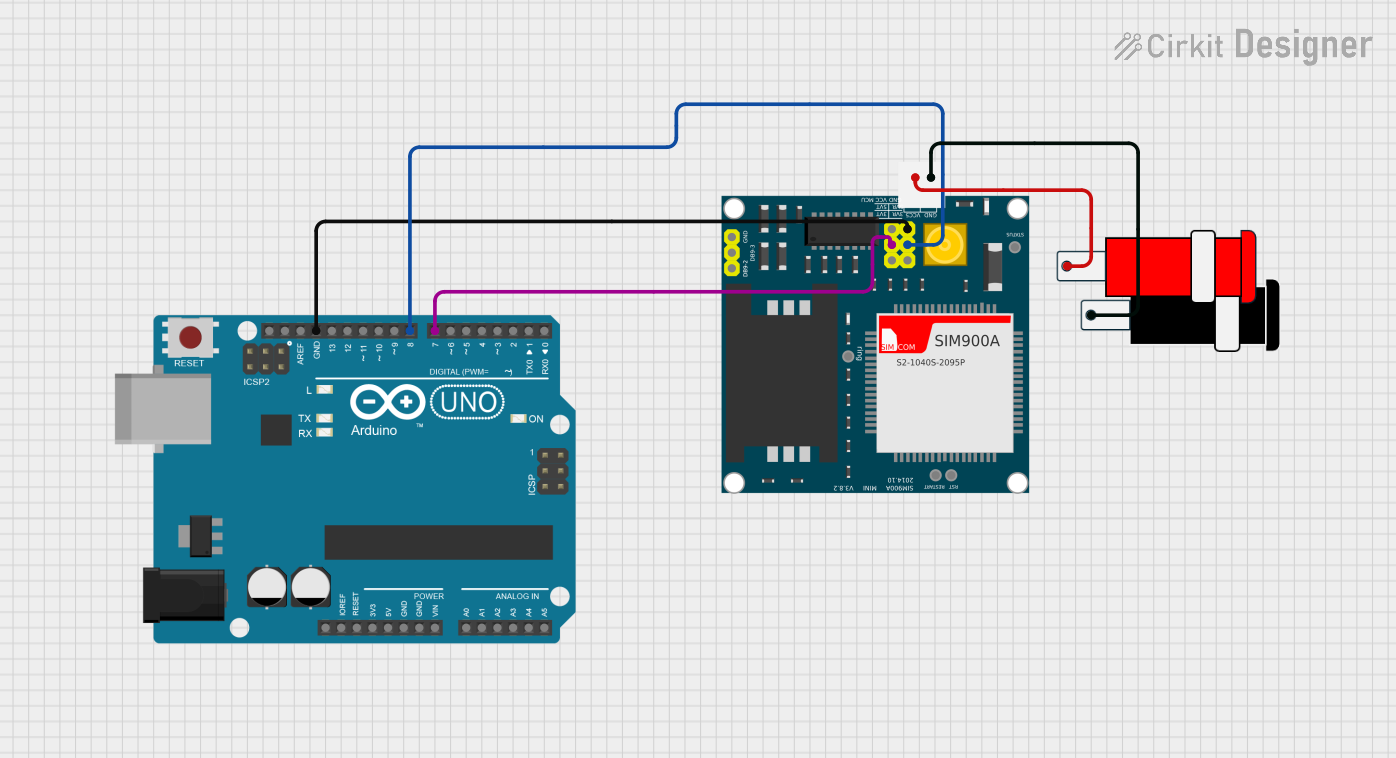
 Open Project in Cirkit Designer
Open Project in Cirkit Designer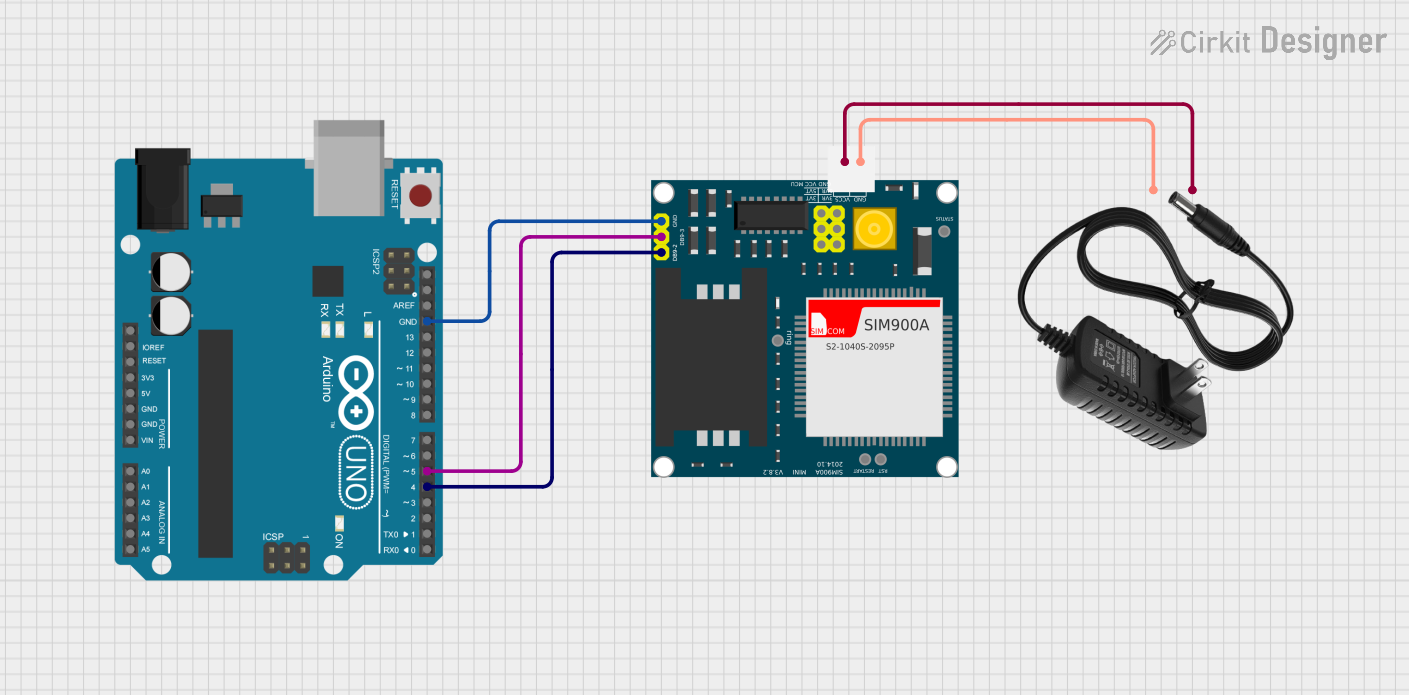
 Open Project in Cirkit Designer
Open Project in Cirkit DesignerExplore Projects Built with GSM Shield Sim900

 Open Project in Cirkit Designer
Open Project in Cirkit Designer
 Open Project in Cirkit Designer
Open Project in Cirkit Designer
 Open Project in Cirkit Designer
Open Project in Cirkit Designer
 Open Project in Cirkit Designer
Open Project in Cirkit DesignerCommon Applications and Use Cases
- IoT devices requiring mobile network connectivity
- Remote monitoring and control systems
- SMS-based alert systems
- Voice call-enabled projects
- GPRS-based data transmission for internet access
Technical Specifications
Below are the key technical details of the GSM Shield Sim900:
| Parameter | Specification |
|---|---|
| Operating Voltage | 5V (via Arduino) or 7-12V (external power) |
| Communication Interface | UART (TX, RX) |
| Frequency Bands | Quad-band: 850/900/1800/1900 MHz |
| GPRS Connectivity | Class 10 |
| SMS Support | Text and PDU modes |
| Voice Call Support | Full-duplex |
| Power Consumption | Idle: ~10mA, Active: ~250mA, Peak: ~2A |
| Antenna | External antenna required |
| Dimensions | ~80mm x 55mm |
Pin Configuration and Descriptions
The GSM Shield Sim900 connects to a microcontroller via its pin headers. Below is the pin configuration:
| Pin | Description |
|---|---|
| TX | Transmit data (connect to RX of MCU) |
| RX | Receive data (connect to TX of MCU) |
| GND | Ground |
| VCC | Power input (5V or external 7-12V) |
| D7 | Power key (used to turn the module ON/OFF) |
| D8 | Status indicator (HIGH when module is ON) |
| D9 | Reset pin (optional, for hardware reset) |
Usage Instructions
How to Use the GSM Shield Sim900 in a Circuit
Powering the Shield:
- Connect the shield to an Arduino or provide an external power supply (7-12V). Ensure the power source can handle peak currents of up to 2A.
- Attach the external antenna to the SMA connector on the shield for proper signal reception.
Connecting to a Microcontroller:
- Connect the TX pin of the shield to the RX pin of the microcontroller and the RX pin of the shield to the TX pin of the microcontroller.
- Connect the GND pin of the shield to the GND of the microcontroller.
Turning ON the Module:
- Use the power key (D7) to turn the module ON. Hold the key for 2-3 seconds to power up the module. The status pin (D8) will go HIGH when the module is ON.
Sending AT Commands:
- Use a serial communication interface (e.g., SoftwareSerial on Arduino) to send AT commands to the module for SMS, calls, or GPRS.
Important Considerations and Best Practices
- Power Supply: Ensure the power supply can handle the peak current of 2A to avoid module resets or instability.
- Antenna Placement: Place the antenna in an open area for better signal reception.
- Baud Rate: The default baud rate of the Sim900 module is 9600. Configure your microcontroller accordingly.
- SIM Card: Insert a valid SIM card with an active data plan for GPRS and SMS functionality.
- Error Handling: Always check the response of the module to AT commands to ensure proper operation.
Example Code for Arduino UNO
Below is an example of how to send an SMS using the GSM Shield Sim900 with an Arduino UNO:
#include <SoftwareSerial.h>
// Define RX and TX pins for SoftwareSerial
SoftwareSerial gsmSerial(7, 8); // RX = 7, TX = 8
void setup() {
// Initialize serial communication
Serial.begin(9600); // For debugging
gsmSerial.begin(9600); // For GSM module communication
Serial.println("Initializing GSM module...");
delay(1000);
// Send AT command to check communication
gsmSerial.println("AT");
delay(1000);
if (gsmSerial.available()) {
Serial.println("GSM module is ready.");
} else {
Serial.println("No response from GSM module.");
}
// Send SMS
sendSMS("+1234567890", "Hello from GSM Shield Sim900!");
}
void loop() {
// Nothing to do here
}
void sendSMS(String phoneNumber, String message) {
gsmSerial.println("AT+CMGF=1"); // Set SMS mode to text
delay(1000);
gsmSerial.print("AT+CMGS=\"");
gsmSerial.print(phoneNumber);
gsmSerial.println("\""); // Set recipient phone number
delay(1000);
gsmSerial.print(message); // Write the SMS content
delay(1000);
gsmSerial.write(26); // Send Ctrl+Z to send the SMS
delay(5000);
Serial.println("SMS sent!");
}
Troubleshooting and FAQs
Common Issues and Solutions
Module Not Responding to AT Commands:
- Ensure the module is powered ON (status pin D8 should be HIGH).
- Check the TX and RX connections between the shield and the microcontroller.
- Verify the baud rate is set to 9600.
Frequent Module Resets:
- Use a power supply capable of providing at least 2A peak current.
- Check for loose connections in the power supply.
No Network Signal:
- Ensure the SIM card is properly inserted and has an active plan.
- Place the antenna in an open area with good signal coverage.
SMS Not Sending:
- Verify the phone number format (e.g., include the country code).
- Check the SIM card balance and SMS service activation.
FAQs
Q: Can the GSM Shield Sim900 be used for internet access?
A: Yes, the shield supports GPRS for internet access. You can use AT commands like AT+SAPBR to configure GPRS settings.
Q: What is the maximum SMS length supported?
A: The module supports SMS messages up to 160 characters in text mode.
Q: Can I use the shield with a 3.3V microcontroller?
A: The shield operates at 5V logic levels. Use a level shifter to interface with 3.3V microcontrollers.
Q: How do I reset the module?
A: Use the reset pin (D9) or send the AT+CFUN=1,1 command to perform a software reset.